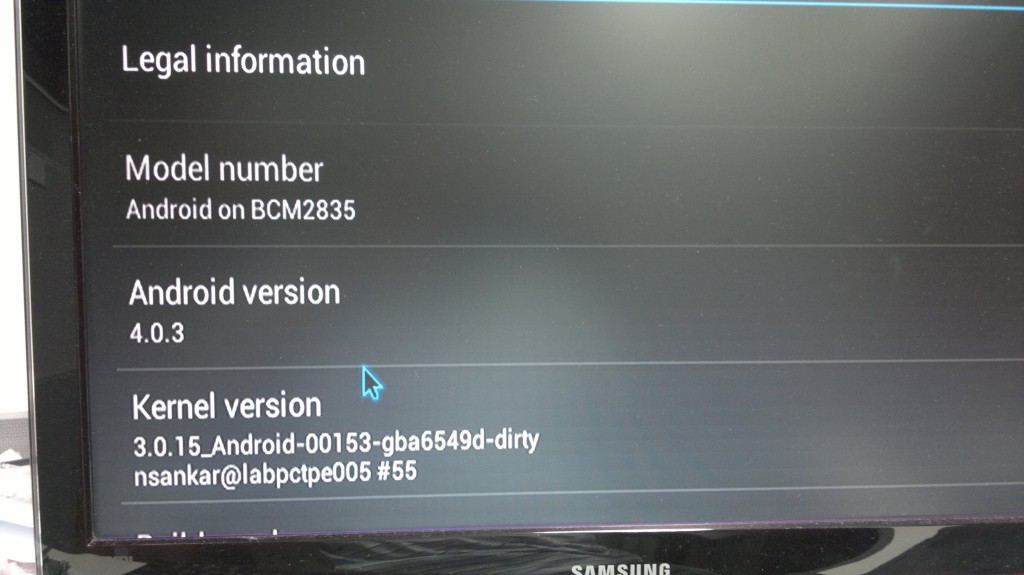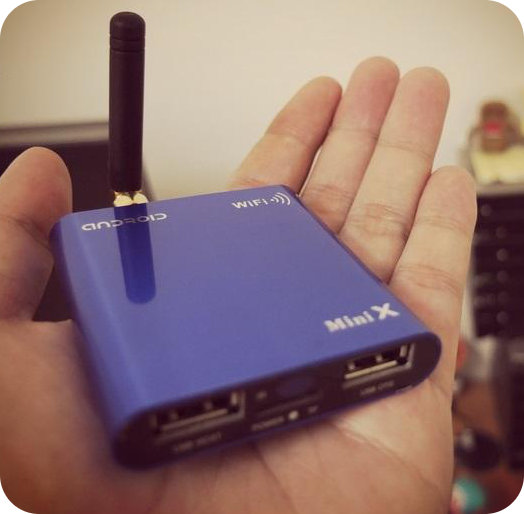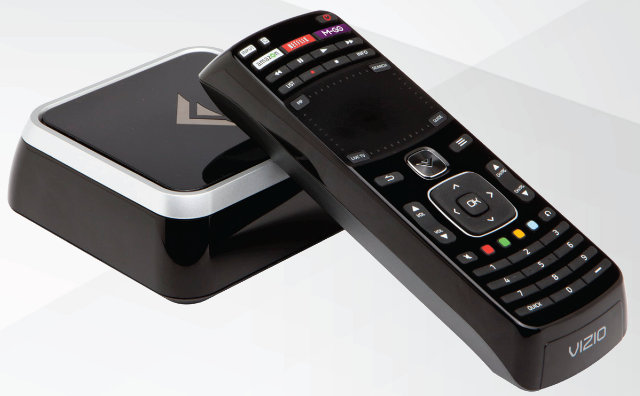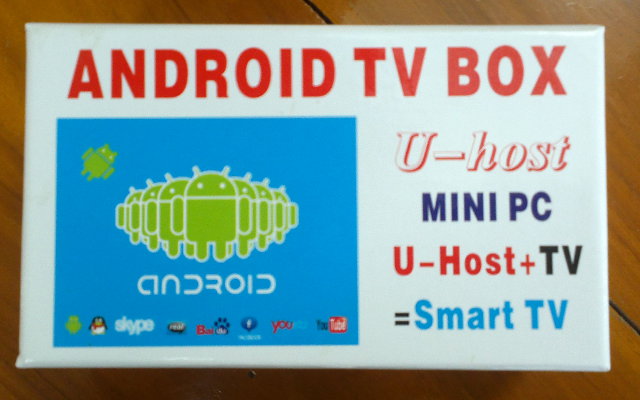CX-01 is a cool low cost Android mini PC (as low as $40), but unlike many other Chinese Android device it is not rooted. Here are the instructions to root it: Download Unlock Root http://www.unlockroot.com/. NB: The download link does not appear to work right now, but the filename is unlockroot23.exe, so here are some alternative untested download links. Find Unlockroot\driver\android_winusb.inf in the directory where you install Unlockroot Open the file in a text editor, and add the following lines: For Win 7 (64-bit): [Google.NTamd64] 64-bit] ;TCC8920 %SingleAdbInterface% = USB_Install, USB\Vid_18D1&Pid_DEED&MI_01 %CompositeAdbInterface% = USB_Install, USB\Vid_18D1&Pid_DEED&Rev_0231&MI_01 For WinXP (32-bit): [Google.NTx86] ;TCC8920 %SingleAdbInterface% = USB_Install, USB\Vid_18D1&Pid_DEED&MI_01 %CompositeAdbInterface% = USB_Install, USB\Vid_18D1&Pid_DEED&Rev_0231&MI_01 Connect CX-01 to your PC via USB, it should then detect your new device. If it doesn’t simply press “fn” key on CX-01 TV Stick. Select the driver that you edited in Unlockroot\driver\android_winusb.inf Once the driver is installed, run unlockroot Press ROOT, then […]
Android 4.0 Running on Raspberry Pi with Hardware Acceleration
Eben of the Raspberry Foundation announced that a developer (Naren) has been working on a port of Android 4.0 for the Raspberry Pi, and the port already appears to be a an advanced stage with hardware-accelerated graphics and video working smoothly. The only major issue is the lack of support for AudioFlinger. The demo below shows Android 4.0 running in the Pi without audio as it’s not implemented yet. The UI is relatively smooth, and video playback and YouTube video streaming work pretty well. This is quite impressive considering the Raspberry Pi has less than 256 MB of memory available to the system, and I suppose they must have made some compromises to make this work. Moreover, I would expect that many applications won’t run properly due to the ARMv6 processor and low system memory. The source code and binary release are not available yet, as this port uses a […]
$77 Mini Xplus Media Player with Android 4.0 and 1GB RAM
I previously wrote about Mini X media player, an Android mini Media Player powered by AllWinner A10 with 512 MB RAM that runs Android 2.3. Its price has been reduced by about $10 to $67.60, and it now has a big brother called Mini Xplus that looks exactly the same except it runs Android 4.0 and comes with 1GB RAM according to Deal Extreme. Here are the device specifications based on Deal Extreme overview: CPU – AllWinner A10 (Cortex A8) with Mali-400 GPU @ 1.2 GHz Memory – 1GB DDR3 RAM Storage – 4GB NAND Flash, microSD slot Video Output – HDMI 1.3 and Composite USB – 2x USB 2.0 host Connectivity – WiFi 802.11 b/g/n Video Formats – MKV, TS, TP, M2TS, RM/RMVB, BD-ISO, AVI, MPG, VOB, DAT, ASF, TRP, FLV etc Video Codecs – MPEG1/2/4, H.264, VC-1, Divx, Xvid, RM8/9/10, VP6 Subtitle – SRT, SUB, IDX, SSA, SMI […]
Vizio Co-Start (VAP430) Google TV Stream Player
First announced at CES 2012, the Vizio VAP430 stream player featuring Google TV 2.0 has become available for pre-order for $99 last week. Here are the specs provided on Vizio website: Video Resolution Supported – 720p, 1080i, 1080p 3D Support – Yes Video Playback – H.264, MP4, MKV Audio Music Playback – MP3, AAC, WMA Audio Features – Up to 5.1 surround sound pass-through Connectivity WiFi – 802.11 n/g/b Bluetooth Ethernet – 10/100 Mbps Connections HDMI In – Connection to Cable or Satellite Box HDMI Out – Connection to TV One USB 2.0 Host port Remote control – Built-In IR Blaster, Bluetooth, Touchpad and Keyboard Dimension – 10.67 x 4.06 x 10.67 cm Weight – 300 grams They did not provide information about the processor, RAM and flash used, but I would guess it’s based on Marvell Google TV Reference Platform which is powered by ARMADA 1500 HD Secure Media […]
Android Jelly Bean on Samsung Origen Development Board (Video)
Linaro Android team has started to port Android Jelly Bean to Samsung Origen board (powered by Exynos 4 dual core processor) and can now show Android 4.1 running on the board with hardware accelerated graphics. This is a preliminary image: the touchscreen, graphics, adb works, and you can use keyboard and mouse as input devices, but Wi-Fi, Bluetooth and multimedia (hardware video decoding) still have to be worked on. If you have an Origen board, you can give it a try by downloading the binaries @ https://android-build.linaro.org/builds/~linaro-android/origen-jb-gcc47-samsunglt-stable-blob/, and follow the instructions to create a bootable SD card with linaro-media-create. Jean-Luc Aufranc (CNXSoft)Jean-Luc started CNX Software in 2010 as a part-time endeavor, before quitting his job as a software engineering manager, and starting to write daily news, and reviews full time later in 2011. www.cnx-software.com
Smallart U-Host mini PC Unboxing and Review
I’ve just received a Smallart Uhost mini PC based on AllWinner A10 from the “The Cubies hacker shop” on Aliexpress. The device features 1GB RAM, 4B flash, includes 802.11 b/g/n built-in, USB ports, HDMI output and a microSD card. It costs $70 including shipping. I received the device in the simple package below. There is a whole bunch of stuffs inside the package. A USB to mini USB cable for power and to connect the device to PC to act as a USB drive, the Smallart U-host mini PC itself, a user manual in English, the power supply 5V/2A with a USB port, an HDMI female to male cable. The USB to mini USB cable has actually 2 large USB connector in order to provide up to 5W power (2 x 500mA x 5V). The mini PC has several connectors including an HDMI male connector, a USB Host port (for […]
Linaro 12.07 Release with Kernel 3.5 and Android 4.0.4
Linaro has released version 12.07 based on Linux Kernel 3.5-rc3 and Android 4.0.4. Some work has been done on Jelly Bean (but the port is for next month), several benchmark tools have been added to LAVA as Linaro wants to provide standard benchmarks for Android, Linaro ALIP image now uses LXDE by default with a smaller image and improved performance, and Open Embedded images are now available (minimal and LAMP stack). Here are the highlights of the release: Android Jellybean baselines for Galaxy and Panda with Linaro extra’s available Android Benchmarking apps were deployed for pandaboard, snowball and origen in LAVA including: vellamo, quadrant, nbench, linpack, glbenchmark, geekbench, caffeinemark, antutu, andebench Improved native Benchmarks variance on Android to 1%, working on Java variance ICS “tests” builds now produced by default and test lists generated Open overlay tarballs working pm-qa’s cpuidle cpufreq cpuhotplug sched_mc suspend integrated into the Android builds Linaro […]
VIA Releases Kernel 2.6.32 and U-Boot Source Code for $49 APC Board
VIA Technology unveiled the low cost APC (Android PC) board based on WonderMedia WM8750 processor (ARM11) back in May, and started to ship the Android board this month (I think since that was their plan). The company has just released Kernel 2.6.32.9 and U-Boot source on github. Here’s how to retrieve the code provided git is already installed on your machine:
|
1 |
git clone git://github.com/apc-io/apc-8750.git |
You can then build U-Boot (provided you’ve already installed an ARM toolchain in your path):
|
1 2 3 |
cd $CURRENT_PATH/u-boot make wmt_config make all |
and the Linux kernel:
|
1 2 3 |
cd $CURRENT_PATH/kernel make 8710_defconfig make ubin |
The availability of the source means we should see Linux distribution like Debian, Fedora or Arch Linux ARM (separate from Arch Linux) running on the board very soon. In theory, it’s also possible to run a Linux distribution with the binary Linux kernel compiled for Android, but it causes some issues and also makes customization more difficult. I think they should also have release the code they modified […]






